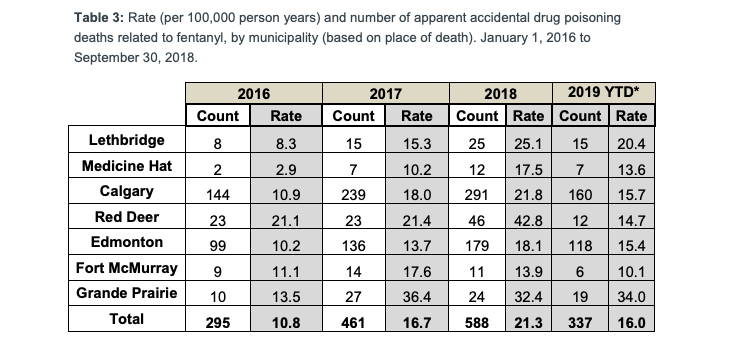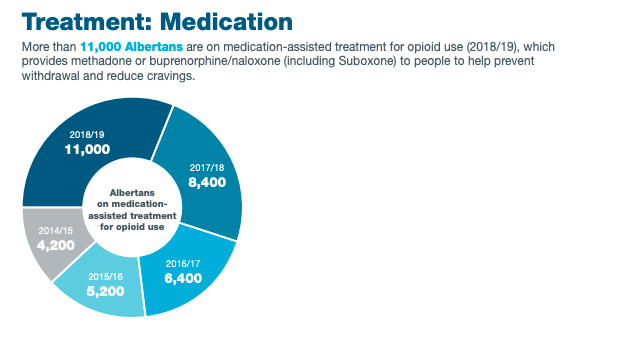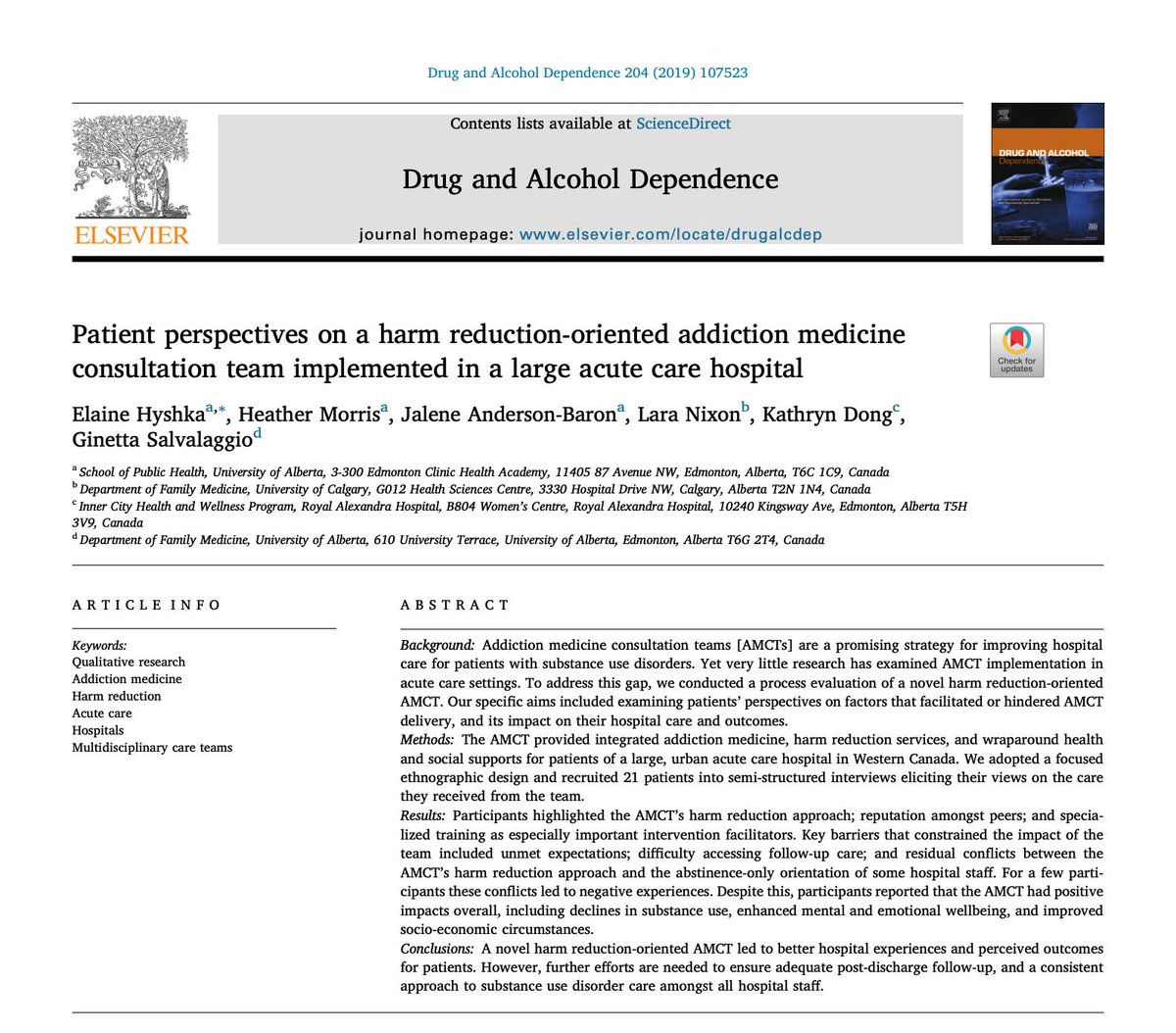
Yesterday, Alberta's premier announced 904 opioid overdose deaths from Jan. to Oct. 2020 (66% increase in the death rate y/y). He attributed this increase to CERB and reduced treatment access. I tweeted already about why it is not CERB, today let's look at treatment. #ableg 

According to the Premier: “As part of our initial series of restrictions...the gov't suspended the operation of residential treatment centres and reduced the number of people who could stay within them and also suspended the operation of opioid dependency clinics."
I'm glad access to residential treatment has been restored, but that isn't really relevant here, because shorter-term inpatient stays alone are not typically recommended for opioid use disorder. crism.ca/wp-content/upl…
However, any disruption to the opioid dependency program (ODP) *would* be relevant and a cause for concern as we know that people are at risk of overdose if they discontinue their medications abruptly.
According to the Premier, AHS' ODP (which prescribes buprenorphine and methadone to treat opioid use disorder) suspended operations in March (restored in April) causing a "a real rupture in treatment programs" here. 

When I heard this I was pretty shocked because most addiction medicine physicians I know would bend over backwards to keep their patients in treatment. Abruptly cutting them off en masse would be unethical, even in the face of an emerging global pandemic.
Thankfully, the provincial dashboard shows that despite this apparent huge drop in the # of patients enrolled in AHS ODP since March, the rates (pictured below) + counts of Albertans dispensed opioid dependence medications in 2020 has been quite stable quarter to quarter. 



So what explains this discrepancy? Two factors are likely. First AHS only accounts for a minority (~20%) of patients in Alberta prescribed opioid dependence medications (most people access this service through other publicly-funded physicians).
Second, and more relevant here, the data shown by the Premier yesterday only refers to the number of patients seen *in person* and does account for the fact that many (most?) ODP patients continued to be cared for virtually without disruption to their treatment programs. 

In summary, a decline in ODP and other treatment access does not appear to be driving the increase in overdose deaths during COVID-19. For more on what I think *is* driving the increase see my thread from yesterday (it's an increasingly toxic drug supply)
https://twitter.com/ehyshka/status/1340066658530914304?s=20
Thanks for reading. We won't solve the overdose epidemic in Alberta unless we are clear on what is driving it. I hope this thread helps dispel some of the misinformation circulating about this very serious public health issue.
This quote from the Calgary Herald btw calgaryherald.com/news/politics/…
Here is a link to the dashboard if you want to have a look for yourself alberta.ca/substance-use-…
*Doesn't, always a typo
• • •
Missing some Tweet in this thread? You can try to
force a refresh








